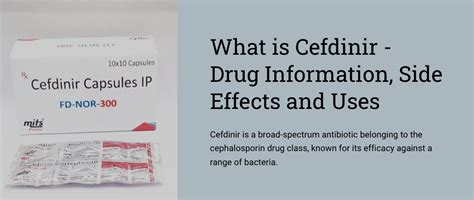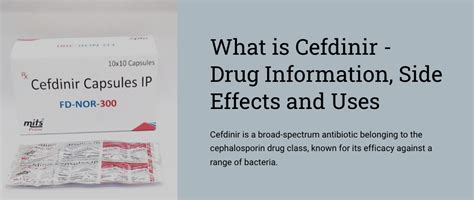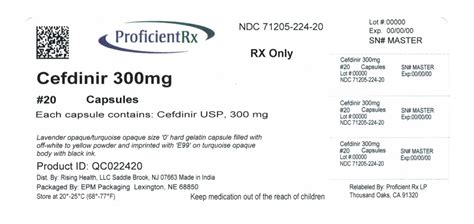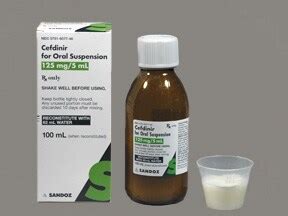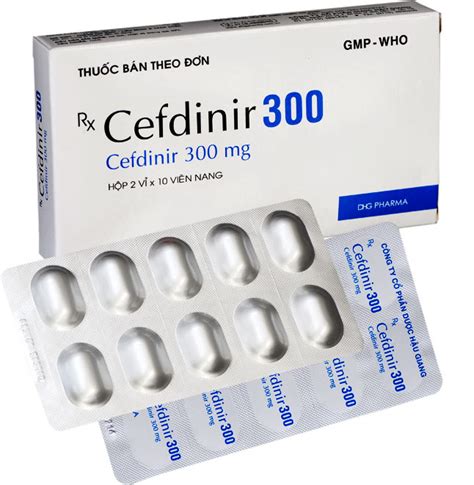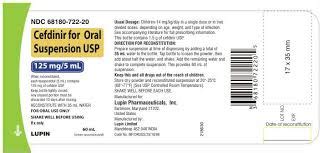The world of antibiotics is vast and complex, with numerous medications available to treat various bacterial infections. One such antibiotic that has gained popularity in recent years is Cefdinir. As a third-generation cephalosporin, Cefdinir has proven to be effective in treating a wide range of bacterial infections, from mild to severe. In this article, we will delve into the uses and benefits of Cefdinir, exploring its mechanism of action, dosage, side effects, and more.
Cefdinir is an oral antibiotic that works by inhibiting the growth of bacteria, ultimately leading to their death. It is commonly used to treat respiratory tract infections, such as pneumonia, bronchitis, and sinusitis, as well as skin and soft tissue infections, like cellulitis and abscesses. The medication is also effective in treating urinary tract infections, including pyelonephritis and cystitis. With its broad spectrum of activity, Cefdinir has become a popular choice among healthcare professionals for treating various bacterial infections.
The importance of Cefdinir lies in its ability to provide effective treatment for bacterial infections, which can be life-threatening if left untreated. According to the Centers for Disease Control and Prevention (CDC), antibiotic-resistant bacteria cause over 2 million illnesses and 23,000 deaths in the United States each year. As a result, it is crucial to use antibiotics like Cefdinir responsibly and only when necessary. By doing so, we can help prevent the development of antibiotic-resistant bacteria and ensure that these medications remain effective in treating bacterial infections.
Cefdinir Mechanism of Action
Cefdinir works by inhibiting the synthesis of the bacterial cell wall, ultimately leading to the death of the bacteria. It binds to penicillin-binding proteins (PBPs) located inside the bacterial cell wall, preventing the cross-linking of peptidoglycan chains. This results in a weakened cell wall, making it susceptible to osmotic pressure and ultimately leading to the lysis of the bacterial cell. Cefdinir's mechanism of action is similar to that of other cephalosporins, but its unique structure and properties allow it to remain effective against a wide range of bacterial strains.
Cefdinir Uses
Cefdinir is used to treat a variety of bacterial infections, including:
* Respiratory tract infections: pneumonia, bronchitis, sinusitis
* Skin and soft tissue infections: cellulitis, abscesses
* Urinary tract infections: pyelonephritis, cystitis
* Otitis media (middle ear infection)
* Pharyngitis (sore throat)
Cefdinir is available in various formulations, including capsules, tablets, and oral suspensions. The medication is typically taken orally, with the dosage and duration of treatment depending on the type and severity of the infection.
Cefdinir Benefits
The benefits of Cefdinir include:
* Broad spectrum of activity: effective against a wide range of bacterial strains
* Oral administration: convenient and easy to take
* Rapid absorption: quickly reaches therapeutic levels in the bloodstream
* Long half-life: allows for once-daily or twice-daily dosing
* Low risk of resistance: less likely to develop resistance compared to other antibiotics
Cefdinir has also been shown to be effective in treating bacterial infections in patients with compromised immune systems, such as those with HIV/AIDS or undergoing chemotherapy.
Cefdinir Side Effects
While Cefdinir is generally well-tolerated, it can cause some side effects, including:
* Gastrointestinal symptoms: diarrhea, nausea, vomiting
* Allergic reactions: rash, itching, hives
* Central nervous system effects: headache, dizziness, fatigue
* Hematologic effects: anemia, thrombocytopenia
* Renal effects: increased creatinine levels, renal failure
It is essential to report any side effects to your healthcare provider, as they can help determine the best course of treatment and minimize any potential risks.
Cefdinir Dosage
The dosage of Cefdinir depends on the type and severity of the infection, as well as the patient's age and renal function. Typical dosages include:
* Adults: 300-600 mg every 12-24 hours
* Children: 7-14 mg/kg every 12-24 hours
* Renal impairment: dose adjustment may be necessary
It is crucial to follow the recommended dosage and treatment duration to ensure effective treatment and minimize the risk of side effects.
Cefdinir Interactions
Cefdinir can interact with other medications, including:
* Antacids: may decrease Cefdinir absorption
* Probenecid: may increase Cefdinir levels
* Warfarin: may increase risk of bleeding
* Iron supplements: may decrease Cefdinir absorption
It is essential to inform your healthcare provider about any medications you are taking, including supplements and over-the-counter medications, to minimize the risk of interactions.
Cefdinir Resistance
The development of antibiotic resistance is a significant concern, and Cefdinir is no exception. To minimize the risk of resistance, it is essential to:
* Use Cefdinir only when necessary
* Follow the recommended dosage and treatment duration
* Complete the full treatment course
* Avoid sharing antibiotics with others
By using Cefdinir responsibly, we can help prevent the development of antibiotic-resistant bacteria and ensure that this medication remains effective in treating bacterial infections.
Cefdinir in Pregnancy and Breastfeeding
Cefdinir is classified as a category B medication, meaning that it is generally considered safe for use during pregnancy. However, it is essential to consult with your healthcare provider before taking Cefdinir during pregnancy or breastfeeding, as they can help determine the best course of treatment and minimize any potential risks.
Cefdinir Contraindications
Cefdinir is contraindicated in patients with:
* Known hypersensitivity to Cefdinir or other cephalosporins
* Severe renal impairment
* History of penicillin allergy
It is essential to inform your healthcare provider about any medical conditions or allergies you may have, as they can help determine the best course of treatment and minimize any potential risks.
What is Cefdinir used for?
+
Cefdinir is used to treat a variety of bacterial infections, including respiratory tract infections, skin and soft tissue infections, and urinary tract infections.
How does Cefdinir work?
+
Cefdinir works by inhibiting the synthesis of the bacterial cell wall, ultimately leading to the death of the bacteria.
What are the common side effects of Cefdinir?
+
Common side effects of Cefdinir include gastrointestinal symptoms, allergic reactions, and central nervous system effects.
Can I take Cefdinir during pregnancy or breastfeeding?
+
Cefdinir is generally considered safe for use during pregnancy and breastfeeding, but it is essential to consult with your healthcare provider before taking the medication.
How long does it take for Cefdinir to work?
+
Cefdinir typically starts working within a few hours of taking the medication, but it may take several days to fully recover from the infection.
In conclusion, Cefdinir is a versatile and effective antibiotic that has proven to be a valuable treatment option for various bacterial infections. By understanding its mechanism of action, uses, benefits, and potential side effects, healthcare professionals and patients can work together to ensure responsible use and minimize the risk of antibiotic resistance. If you have any questions or concerns about Cefdinir, we encourage you to comment below or share this article with others. Additionally, if you are experiencing symptoms of a bacterial infection, consult with your healthcare provider to determine the best course of treatment. Remember, antibiotics like Cefdinir are a powerful tool in the fight against bacterial infections, and using them responsibly is crucial to maintaining their effectiveness.

